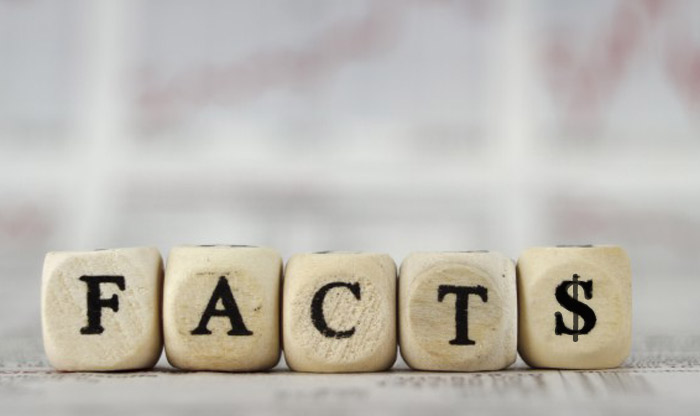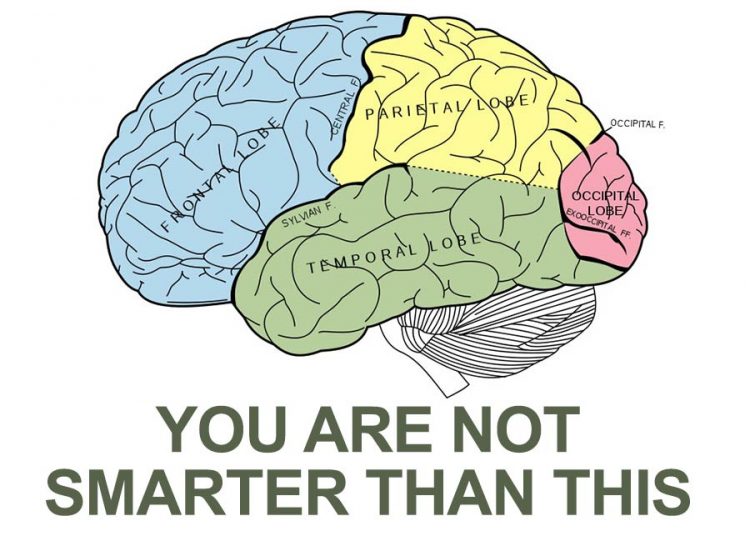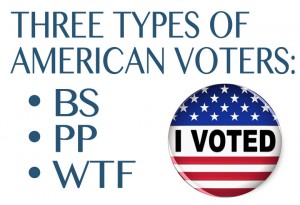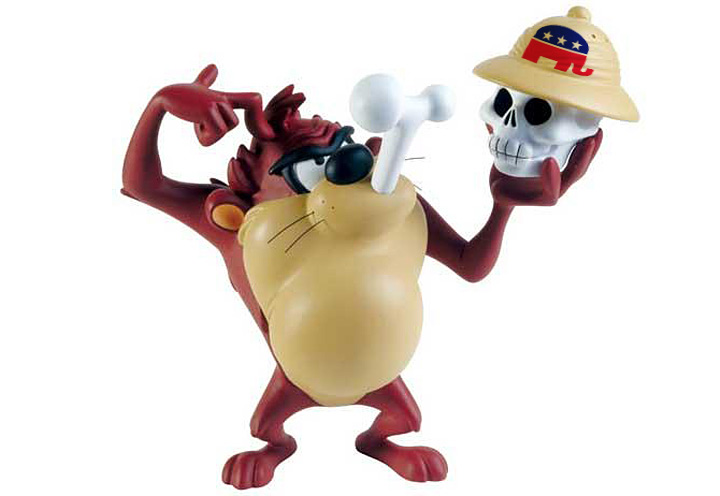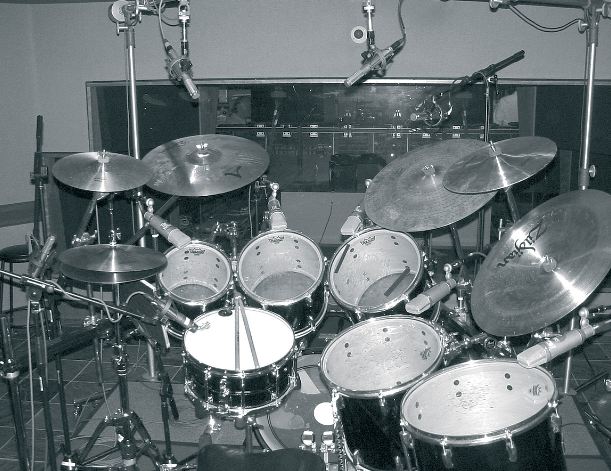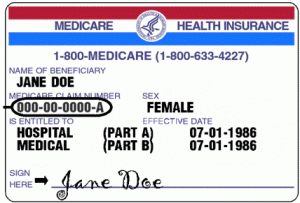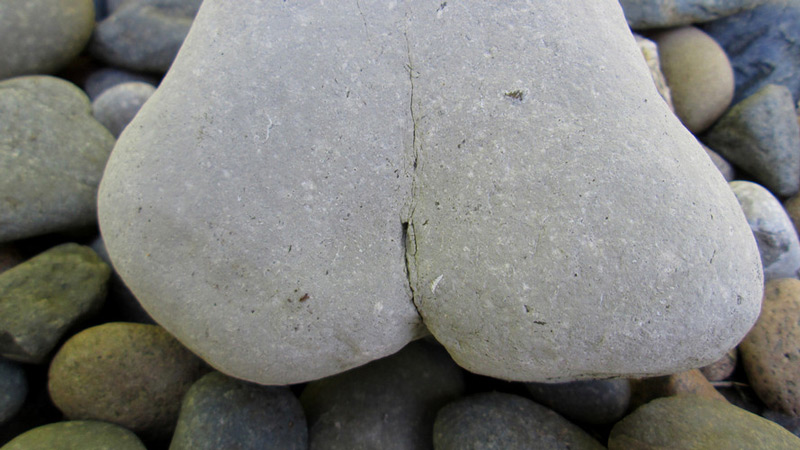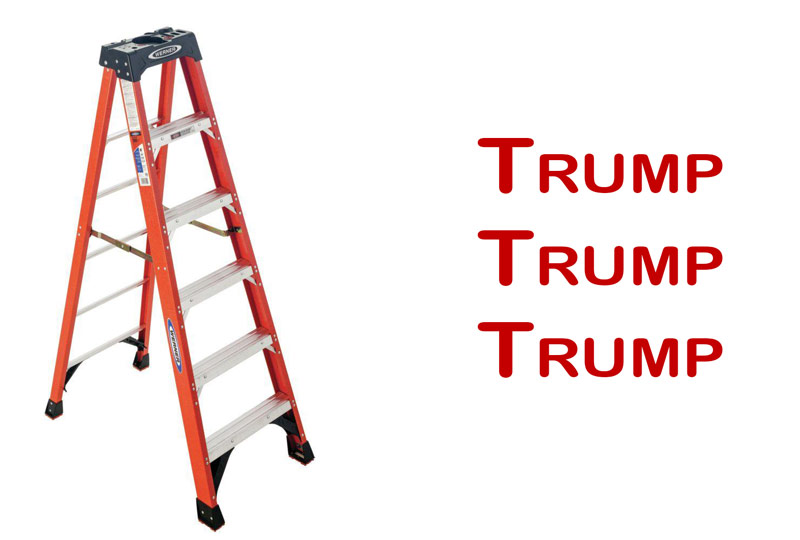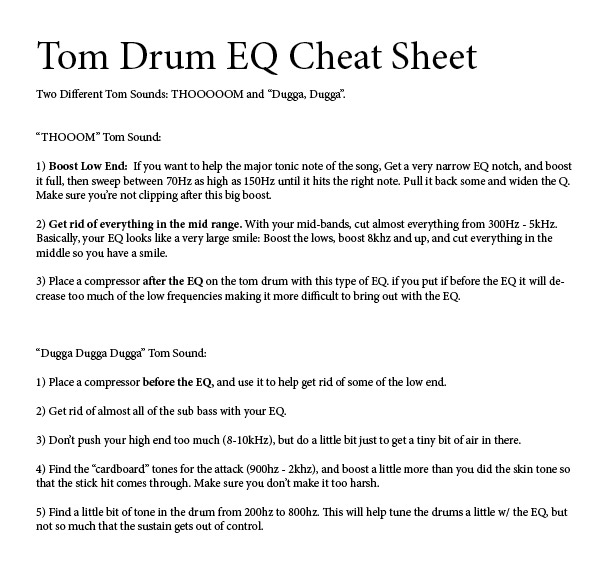
These are quick starting points you can try to get you started for a tom drum sound. Rule one when mixing your music is that there really is no magic equation that will get the exact sound you want. Ultimately, how you EQ and place each instrument has to work within the song, the instruments, and the record as a whole. This post covers two starting-point EQ settings for tom drums (floor and rack toms) when mixing a drum kit.
Related: Setting Up A Drum Mix & Recording Drums
First, we’ll try to describe the two different sounds we’re trying to achieve with these Tom EQs:
- “THHHOOOOOMMM” (and)
- Dugga Duggga Dugggga
… Make sense?
The “THOOOOOOM” tom drum sound is similar to what you’d hear on sampled drums, some 80’s music, or more “band” style like earlier Dave Matthews, and a lot of rock, and funk music. This tom drum sound has a lot of sustain and a lot of tone (tone starts higher, then tends to go from a higher to lower note). If the drums are tuned really well, and you want the toms to really make a statement in the overall drum mix, then the thooooommmm sound can be a place to start.
The “Duggga Duggga” sound has much less sustain and resonance. It has more skin sound and doesn’t try to stick out in the mix as a dominant sound. It’s more like a Toxicity tom drum sound or older rock songs in the EQ and mix. This tom style works well when the drummer is playing a bit faster (shorter sustain means they won’t overlap and get too muddy when the drummer does a fast roll). It’s also a good choice if ou don’t want the toms to distract too much from everything else that’s going on in your mix. This tom EQ tends to be good if you want them to be a bit more of a driving force rhythmically rather than focusing on the tone.
Starting point EQs for those two tom drum sounds:
THOOOOOM (big tom sound with lots of sustain) settings:
- This requires a lot of low end (which is the OOOOOMMM part). If you want to help the major tonic note of the song, Get a very narrow EQ notch, and boost it full, then sweep between 70Hz as high as 150Hz until it hits the right note. Pull it back some and widen the Q.
- You also need lot of high end (to get the TTTHHHHHH part of “THHHOOOOMM“).
- Then you take out everything in the middle. With your mid-bands, cut almost everything from 300Hz – 5kHz.
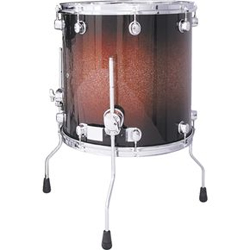
- Basically, your EQ looks like a very large smile: Boost the really lows, boost 8khz and up, and cut everything in the middle so you have a smile.
- Place a compressor after the EQ on the tom drum with this type of EQ. if you put if before the EQ it will decrease too much of the low frequencies making it more difficult to bring out with the EQ.
If the recorded, raw sound of tom drums is very flat, this can help bring out some life as well.
The Dugga Dugga Dugga sound is somewhat the opposite of the first.
- Place a compressor before the EQ, and use it to help get rid of some of the low end. A side-effect of heavy compression is that it “takes away” some of the low end the more you compress it. Be careful, though, you do not want to over-compress, which will just make it sound flat.
- Get rid of almost all of the sub bass with your EQ. This gets control of the low end, and will help focus on the hit rather than the resonance and sustain of the drum.
- Don’t push your high end too much, but do a little bit just to get a tiny bit of air in there… better way to explain hat for drums is literally skin: put you hands together and rub back and forth, that’s what you’re looking to pull out a little which helps drums sound more natural and less like they’re sampled.
- Find the “cardboard” tones for the attack (900hz – 2khz), and boost a little more than you did the skin tone so that the stick hit comes through, but isn’t to harsh.
- Find a little bit of tone in the drum from 200hz to 800hz. This will help tune the drums a little w/ the EQ, but not so much that the sustain gets out of control.
- Top to bottom, the EQ curves will look a little like a drunken frown.
To get a feel for the sounds be really extreme at first. Seriously, go crazy with the boosts and cuts, especially with the THHHOOOMM sound. But don’t keep it that way in a real mix; be extreme to learn about it so your ears will get trained to hear where these frequencies are, but don’t leave it that way.
Starting with these two, very different EQs, you can very likely start with one, then modify to ultimately get the final tom drum sound you want that fits the song.



